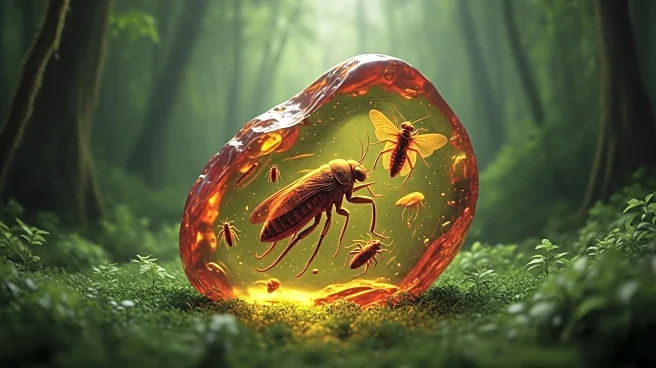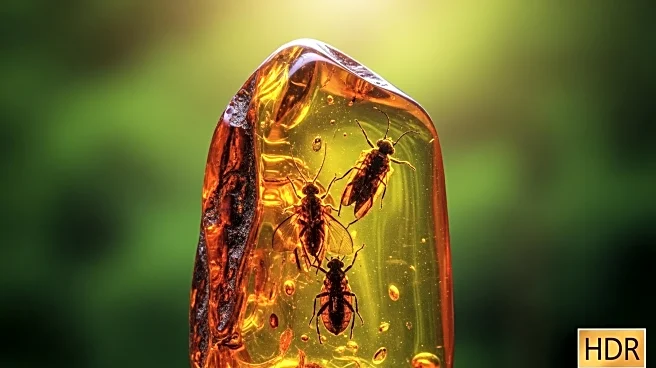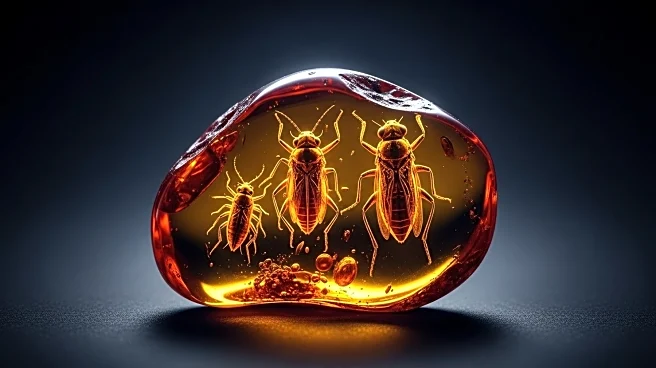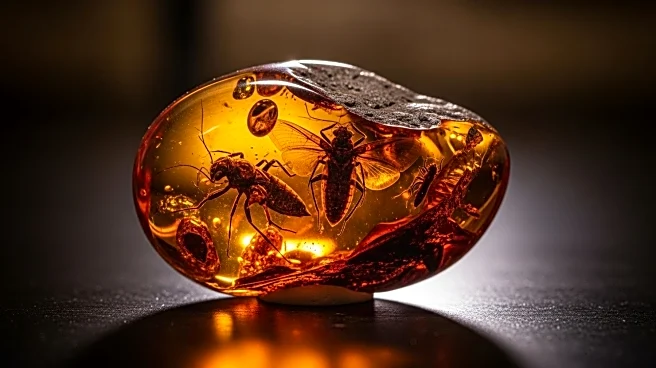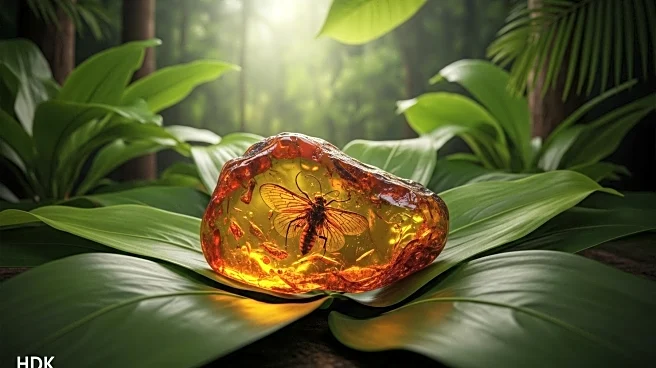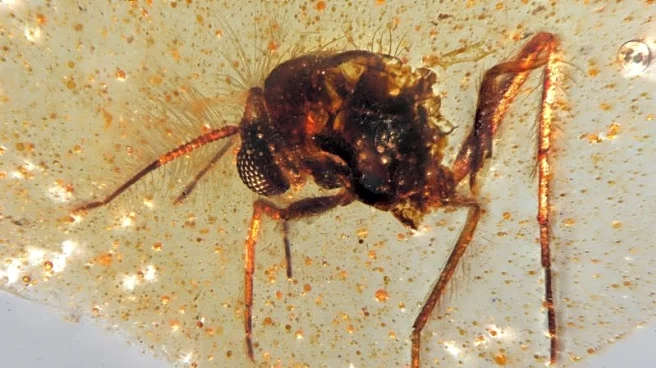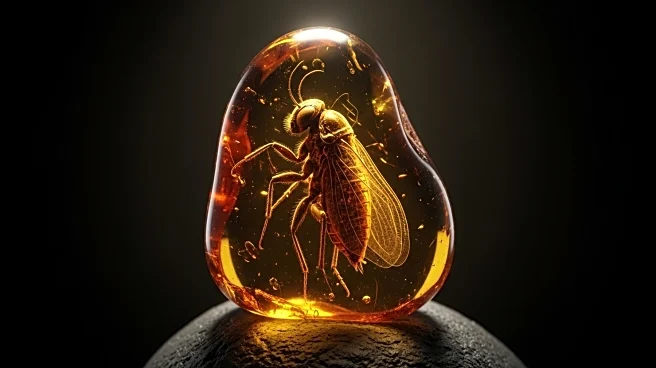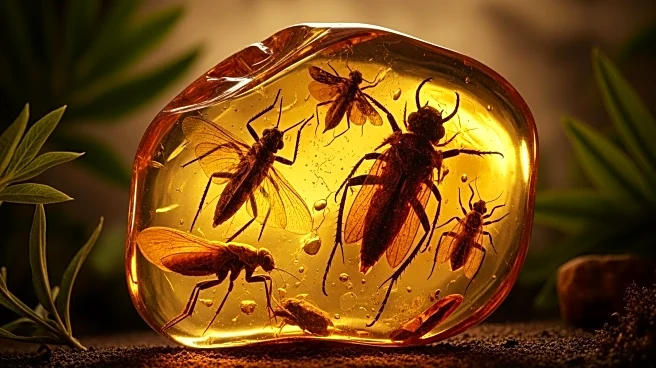What is the story about?
What's Happening?
Scientists have discovered prehistoric insects preserved in amber at a quarry in Ecuador, providing insights into life on Earth 112 million years ago. The amber contains ancient beetles, flies, ants, and wasps, marking the first such discovery in South America. This finding sheds light on the interactions between flowering plants and insects during the era of the dinosaurs. The amber pieces, found on the edge of the Amazon basin, reveal a different kind of rainforest with species of ferns and conifers that no longer grow in the region.
Why It's Important?
This discovery is crucial for understanding the evolution of biodiversity in the Amazon rainforest and the historical interactions between plants and insects. It offers a unique glimpse into the ecosystem dynamics during the Cretaceous period, contributing to the broader knowledge of Earth's biological history. The findings could inform current conservation efforts by highlighting the long-term changes in rainforest composition and the importance of preserving biodiversity.
What's Next?
Researchers will continue to analyze the amber trove to learn more about Cretaceous-era biodiversity and the evolutionary relationships between plants and insects. This ongoing research may uncover additional species and provide further insights into the ecological conditions of ancient rainforests.
AI Generated Content
Do you find this article useful?
